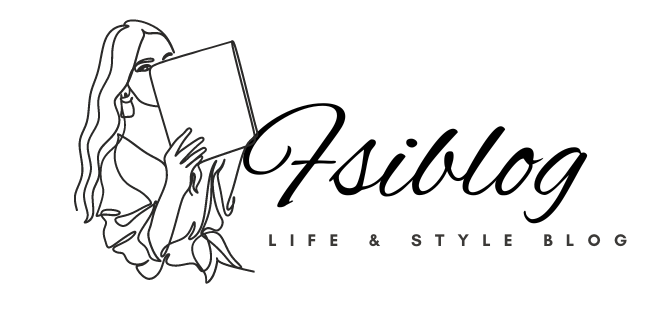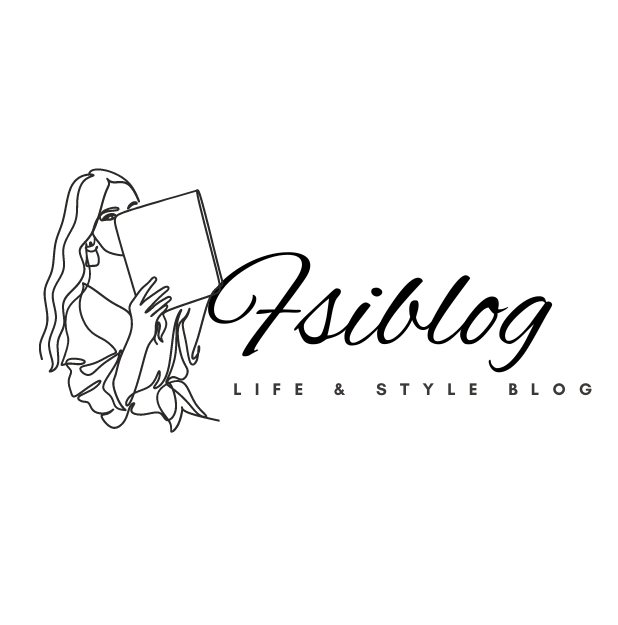Have you ever put on a bright yellow shirt and felt instantly happier? Or worn your favorite cozy sweater when you needed comfort? That’s mood dressing, and it’s more powerful than you might think.
Three months ago, I was having a rough week. Work was stressful, I felt tired all the time, and getting dressed felt like a chore. I would stand in front of my closet every morning, feeling overwhelmed by choices that all seemed wrong for how I felt.
Then I read about something called “mood dressing” – the idea of choosing clothes based on your emotions instead of just what looks good or what’s clean. It sounded too simple to work, but I was desperate to feel better.
I decided to try it for 30 days. What happened surprised me. Not only did I feel better most days, but I also learned things about myself I never knew. The right clothes could actually change my mood, not just reflect it.
This isn’t just feel-good nonsense. Scientists have studied how clothes affect our brains and behavior. Fashion therapists work with people to help them feel better through clothing choices. There’s real science behind why a soft sweater makes you feel calmer or why wearing red gives you energy.
In this article, I’ll share everything I learned during my mood dressing experiment. You’ll learn what mood dressing really is, why it works, and how to start doing it yourself. Best of all, you don’t need new clothes or a big budget – you can start with what’s already in your closet.
What Is Mood Dressing?
- Mood dressing means picking your clothes based on how you feel that day. When you’re sad, you might wear bright colors to feel happier. When you’re tired, you might choose soft, cozy clothes. When you’re excited, you might pick something fun and colorful.
- This idea isn’t new. Fashion therapists have studied this for years. They found that what we wear affects our brains and how we feel.
Science Behind Clothes and Feelings
Your brain connects colors, textures, and styles to different emotions. Here’s what happens:
- Red clothes make your heart beat faster and give you energy.
- Blue clothes help you feel calm and peaceful.
- Soft fabrics release stress hormones in your body.
- Structured clothes make you feel more confident and organized.
Dr. Karen Pine, a psychology professor, calls this “enclothed cognition.” She found that people who wore lab coats felt smarter and more careful. The same thing happens with regular clothes.
My Personal Mood Dressing Experiment
I tried mood dressing for 30 days. Here’s what happened each week:
Week 1: Learning My Mood Patterns
I wrote down my mood every morning before getting dressed. I noticed:
- Monday mornings: Tired and grumpy
- Wednesday afternoons: Stressed
- Friday evenings: Happy and excited
- Sunday mornings: Relaxed
Week 2: Matching Clothes to Feelings
I started picking clothes that matched my mood:
| Mood | What I Wore | How It Felt |
|---|---|---|
| Tired | Soft sweater and stretchy pants | More comfortable, less grumpy |
| Stressed | Structured blazer and nice jeans | More organized and felt capable |
| Happy | Bright yellow dress | Even happier, got compliments |
| Relaxed | Flowy cardigan and comfortable shoes | Stayed calm all day |
Week 3: Using Clothes to Change My Mood
This week, I tried wearing clothes that would help me feel better:
- Wore red when I felt lazy (it gave me energy)
- Wore blue when I felt anxious (it calmed me down)
- Wore my favorite dress when I felt sad (it made me smile)
Week 4: Creating My Mood Wardrobe
I organized my closet by mood instead of by type of clothing:
Energy Boosters:
- Redshirt
- Orange scarf
- Bright patterns
- Fitted clothes
Comfort Items:
- Soft sweaters
- Loose pants
- Fuzzy socks
- Cardigans
Confidence Builders:
- Blazers
- Good jeans
- Nice shoes
- Jewelry
Calm Creators:
- Blue tops
- Flowing skirts
- Soft colors
- Natural fabrics
How to Start Mood Dressing
Step 1: Notice Your Mood Patterns
Keep a simple mood journal for one week. Write down:
- How you feel when you wake up
- What makes you feel good or bad
- Which days are hardest for you
Step 2: Look at Your Clothes Differently
Go through your closet and ask:
- Which clothes make me happy?
- What do I wear when I want to feel confident?
- Which fabrics feel best on my skin?
- What colors make me smile?
Step 3: Match Clothes to Feelings
Start small. Pick one piece of clothing that matches your mood each day. You don’t need to change your whole outfit.
Step 4: Experiment with Mood-Changing Clothes
Try wearing something different when you want to feel better:
- Feeling down? Wear a bright color
- Feeling anxious? Choose soft, comfortable clothes
- Feeling lazy? Put on something that makes you feel put together.
Results: How Mood Dressing Changed My Life
After 30 days, I noticed big changes:
- Better Days: I had fewer bad mood days. When I did feel down, I bounced back faster.
- More Confidence: Wearing clothes that fit my mood made me feel more like myself. I stopped trying to hide how I felt.
- Less Stress: Getting dressed became easier. I knew exactly what to wear based on how I felt.
- Better Sleep: Wearing comfortable, mood-appropriate clothes helped me relax better at night.
- More Compliments: People noticed I seemed happier and more put-together.
Common Mistakes to Avoid
- Don’t Force It: If you’re having a really bad day, don’t force yourself to wear happy clothes. Sometimes, you need to honor your feelings first.
- Don’t Buy New Clothes: Use what you already have. You probably have mood-appropriate clothes in your closet right now.
- Don’t Overthink It: This should be fun, not stressful. If you can’t decide what mood you’re in, wear what feels comfortable.
- Don’t Judge Your Moods: All feelings are normal. Don’t feel bad about being sad or tired sometimes.
Practical Tips for Busy People
Quick Mood Check
Ask yourself these three questions:
- How do I feel right now?
- How do I want to feel today?
- What clothes would help me get there?
5-Minute Rule
If you can’t decide what to wear, set a timer for 5 minutes. Pick something that feels right for your mood and go with it.
Mood Dressing for Work
You can still dress for your mood at work:
- Add a colorful scarf or jewelry
- Choose different textures (soft vs. structured)
- Pick shoes that match your energy level
- Wear colors that make you feel good
Special Situations
Rainy Days
When it’s gloomy outside, your clothes can help:
- Wear bright colors to fight the gray
- Choose cozy textures for comfort
- Add something that makes you smile
Important Meetings
Match your clothes to how you want to feel:
- Nervous? Wear something that makes you feel strong
- Excited? Choose something that shows your personality
- Tired? Pick comfortable clothes that still look professional.
Social Events
Think about the mood you want to create:
- Want to feel confident? Wear your favorite outfit
- Want to feel comfortable? Choose clothes you can move in easily
- Want to feel special? Add one piece that makes you happy.
Building Your Mood Wardrobe
You don’t need lots of clothes to dress for your mood. Here’s what works:
Essential Mood Pieces
- One Comfort Item: A soft sweater, cozy cardigan, or comfortable dress
- One Confidence Booster: A blazer, nice jeans, or an outfit that makes you feel strong
- One Happy Piece: Something in a color or pattern that makes you smile
- One Calm Creator: Clothes in soft colors or natural fabrics
Colors and Moods
Different colors affect people differently, but here are common connections:
- Red: Energy, confidence, power
- Blue: Calm, peace, trust
- Yellow: Happiness, creativity, optimism
- Green: Balance, growth, freshness
- Purple: Creativity, luxury, mystery
- Orange: Fun, enthusiasm, warmth
- Pink: Nurturing, love, softness
- Black: Sophistication, strength, mystery
- White: Clean, fresh, simple
- Gray: Neutral, professional, calm
Long-Term Benefits
After three months of mood dressing, I noticed these changes:
- Better Self-Awareness: I understand my moods better and can predict what I’ll need.
- Improved Relationships: When I feel good in my clothes, I’m more confident in social situations.
- Less Shopping: I buy fewer clothes because I use what I have more thoughtfully.
- Better Mental Health: Small daily choices that honor my feelings add up to better overall well-being.
Making It a Habit
| Week | Focus | What to Do |
|---|---|---|
| Week 1 | Just Notice | Pay attention to how different clothes make you feel. Don’t change anything yet. |
| Week 2 | Make Small Changes | Add one mood-appropriate piece each day (e.g., cozy socks, favorite top). |
| Week 3 | Experiment | Use clothes to influence your mood, not just match it (e.g., wear bold colors on low days). |
| Week 4 | Create Your System | Organize your closet or build a daily outfit routine that supports your mood and lifestyle. |
When Mood Dressing Doesn’t Work
Sometimes, you might not want to dress for your mood:
- Professional Requirements: Some jobs require specific uniforms or dress codes.
- Laundry Day: When your mood-appropriate clothes are dirty.
- Special Events: When the event requires specific attire.
- Depression or Anxiety: When mental health issues make it hard to make decisions.
- That’s okay. Mood dressing is a tool, not a rule. Use it when it helps you.
Last Lines
Dressing for your mood is a simple way to feel better every day. It doesn’t require special skills, lots of money, or a big wardrobe. It just requires paying attention to how you feel and choosing clothes that support those feelings.
The best part? It gets easier with practice. After a few weeks, you’ll naturally reach for clothes that match your mood. You’ll start to see your closet as a tool for feeling good, not just looking good.
Try it for one week. Notice how you feel when you wake up, pick one piece of clothing that matches that feeling, and see what happens. You might be surprised at how much better you feel when your outside matches your inside.
Remember: there’s no wrong way to feel, and there’s no wrong way to dress for your mood. The goal is to feel more comfortable in your skin, one outfit at a time.

